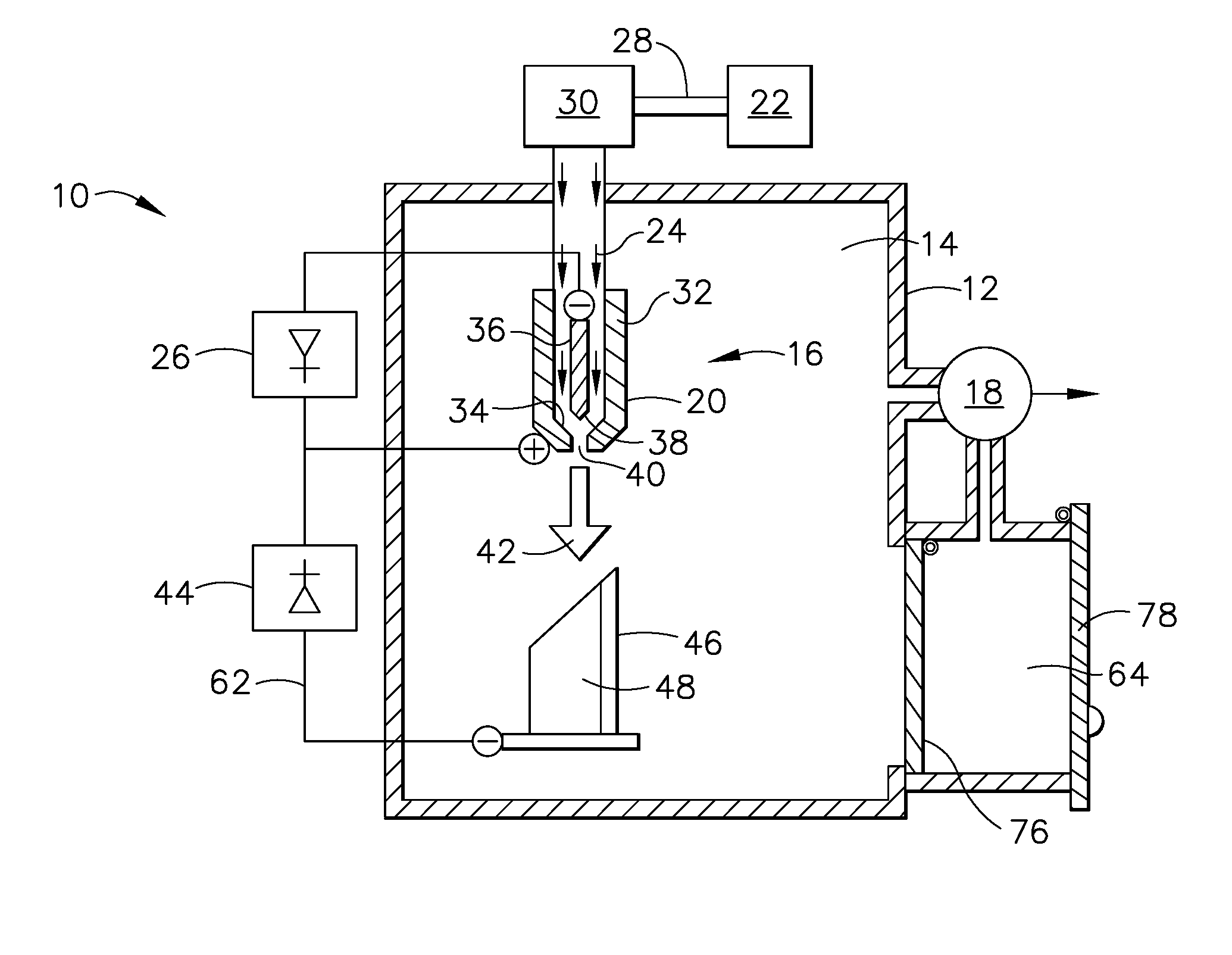Apparatus and method for reducing metal oxides on superalloy articles
a technology of alloy articles and apparatus, applied in the direction of mechanical apparatus, engine manufacturing, machines/engines, etc., can solve the problems of airfoil components such as turbine blades and vanes, which are expensive to replace and sometimes costly to repair, and can experience corrosion on the surface of alloy components, etc., to achieve the effect of safe and effective removal of oxides
- Summary
- Abstract
- Description
- Claims
- Application Information
AI Technical Summary
Benefits of technology
Problems solved by technology
Method used
Image
Examples
example 1
Active H3+ Ion Generator
[0044] A turbine blade is removed from a commercial gas turbine engine for routine maintenance. Within a conventional vacuum plasma chamber (such as from Sulzer Metco), the turbine blade is secured to an insulated stage. The blade is made of a Ni-based superalloy, and has a surface comprising metal oxide corrosion and a surface crevice comprising a metal oxide corrosion on the walls thereof. Any loose corrosion material has been removed before securing the blade into the chamber. A plasma torch is movably positioned within the chamber with its nozzle directed at a selected location of the turbine blade. The plasma torch is a conventional plasma torch, such as a model 3MB-II made by Sulzer Metco. The plasma torch has a watercooled copper nozzle (primary anode) and a tungsten electrode (primary cathode). The plasma supply gas contains 95% argon and 5% hydrogen, and is supplied from a compressed gas cylinder through a regulating valve and standard gas tubing to...
example 2
Passive H3+ Ion Generator
[0046] Within a conventional vacuum chamber with an electrical feed-thorough (such as from Varian) are arranged a pair of cathode angle pieces. The cathode angle pieces (iron) are electrically attached end to end and set apart at an angle of about 50 degrees to form a variable hollow cathode gap. The cathode angle pieces are contacted electrically with the negative terminal of a power source. The metallic inner wall of the chamber is connected to the positive terminal of the power source. Attached to the upright inner face of each angle piece is an alloy disc (chromium alloy, 25.4 mm diameter× about 5 mm thick). The alloy discs have a 1 mm wide slot cut through the thickness from the circumference to the center. Each alloy disc has been uniformly oxidized in an air furnace for one hour at 2000° F. to form a substantially uniform coating of metal oxides upon all surfaces, including those surfaces within the slot. The airspace within the chamber is flushed wi...
example 3
[0049] The procedure according to Example 2 is repeated with the alloy discs preheated and maintained at a temperature of about 1800 2000° F. (982-1093° C.). Both visual and elemental analyses show that all the metal oxides on the alloy surface have been reduced to the base alloy metals.
PUM
| Property | Measurement | Unit |
|---|---|---|
| pressures | aaaaa | aaaaa |
| pressure | aaaaa | aaaaa |
| pressure | aaaaa | aaaaa |
Abstract
Description
Claims
Application Information
 Login to View More
Login to View More - R&D
- Intellectual Property
- Life Sciences
- Materials
- Tech Scout
- Unparalleled Data Quality
- Higher Quality Content
- 60% Fewer Hallucinations
Browse by: Latest US Patents, China's latest patents, Technical Efficacy Thesaurus, Application Domain, Technology Topic, Popular Technical Reports.
© 2025 PatSnap. All rights reserved.Legal|Privacy policy|Modern Slavery Act Transparency Statement|Sitemap|About US| Contact US: help@patsnap.com



